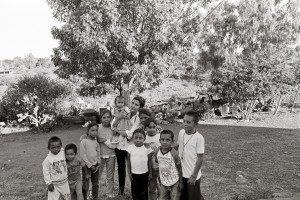 My Fulbright adventure began with a three-day orientation held in Mexico City. It was not only an introduction to this dynamic city but also an introduction to my colleagues and fellow Fulbrighters. Assembled in Mexico City for the orientation was a diverse group of scholars, artists, scientists, researchers and business professionals. Our fields were equally diverse and included agriculture, anthropology, ethnomusicology, painting and sociology, to list only a few, and yet we were all united by a common interest – Mexico.
My Fulbright adventure began with a three-day orientation held in Mexico City. It was not only an introduction to this dynamic city but also an introduction to my colleagues and fellow Fulbrighters. Assembled in Mexico City for the orientation was a diverse group of scholars, artists, scientists, researchers and business professionals. Our fields were equally diverse and included agriculture, anthropology, ethnomusicology, painting and sociology, to list only a few, and yet we were all united by a common interest – Mexico.
My research took me to Mexico’s central states where I photographed migrant culture in an area with high rates of historic migration. As a first generation Mexican-American, it was a familiar topic to me, but I had never lived in Mexico as an adult. Previously, I spent three years photographing Mexican-American culture in the United States, but now I wanted to see how migration had changed the towns’ landscapes to and from which many people migrated over several decades. Some of my fellow Fulbrighters were also interested in immigration research, and this allowed me to learn more from my peers. In addition, I enrolled in a class on local and regional development at the Universidad de Guanajuato, my university affiliation. The course gave me an opportunity to discuss with the professor and local students how underdeveloped areas prompted their populations to migrate to Mexico’s urban centers and to the United States.
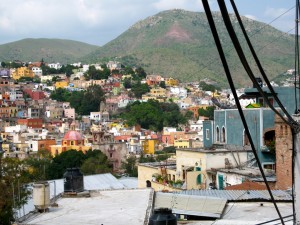 There were several things I did that made my stay more enjoyable and helped me to feel like I was part of a community. I participated in local “talleres,” or workshops, and learned about some traditions such as making sugar candy for the Day of the Dead celebration. I tutored a student interested in photography and even tried my hand at tae-kwon-do. I quickly decided martial arts weren’t my thing, but I had to appease my curiosity after walking by the class, day after day, on my way down to the “mercado” or market. I traveled frequently to local communities, and my affiliations often helped with my initial introductions to them. Other times, I had to introduce myself to strangers, meet people on the local bus or in eateries and “pensiones,” and do my research on the ground. I can’t be shy as a photographer, but it also helped that many people were so welcoming – inviting me, a stranger, into their homes and allowing me to document their lives. Reflecting on my time in Mexico, I realize that it had been important for me to plan my Fulbright proposal meticulously on paper. The opportunity to photograph some events occurred only once, such as the winter holidays and “fiestas” when migrants return to their hometowns. Yet my plan of action would not have succeeded had I not been curious to learn from those around me and open to some degree of serendipity.
There were several things I did that made my stay more enjoyable and helped me to feel like I was part of a community. I participated in local “talleres,” or workshops, and learned about some traditions such as making sugar candy for the Day of the Dead celebration. I tutored a student interested in photography and even tried my hand at tae-kwon-do. I quickly decided martial arts weren’t my thing, but I had to appease my curiosity after walking by the class, day after day, on my way down to the “mercado” or market. I traveled frequently to local communities, and my affiliations often helped with my initial introductions to them. Other times, I had to introduce myself to strangers, meet people on the local bus or in eateries and “pensiones,” and do my research on the ground. I can’t be shy as a photographer, but it also helped that many people were so welcoming – inviting me, a stranger, into their homes and allowing me to document their lives. Reflecting on my time in Mexico, I realize that it had been important for me to plan my Fulbright proposal meticulously on paper. The opportunity to photograph some events occurred only once, such as the winter holidays and “fiestas” when migrants return to their hometowns. Yet my plan of action would not have succeeded had I not been curious to learn from those around me and open to some degree of serendipity.
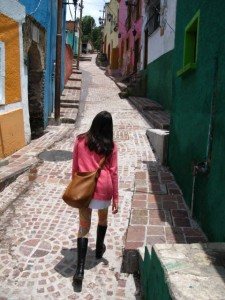 I also see that my time in Mexico was instrumental to my creative and professional growth as a photographer. Currently, I am enrolled in an MFA program in photography at the Massachusetts College of Art and Design where I am still working on projects that involve migrant culture. The Fulbright Program allowed me to dedicate myself, for the first time, entirely to this photographic endeavor. Imagine being given the opportunity to practice your craft on a daily basis. Prior to this, I had held many odd day jobs, balancing my photographic aspirations with the reality of having to pay for rent and other household expenses (not to mention film in my camera). I know many artists in similar situations and it is easy to get discouraged. The Fulbright Program was a much-needed affirmation of my photographic skills and an opportunity to pursue my project. Aside from my persistence in working on my project, there were many things that I felt were stacked against my favor and that initially kept me from applying for a Fulbright. I was not a recent college graduate. I had changed my career path in my mid-twenties to pursue photography and was self-taught. I was only beginning to develop my resume as a photographer. I was fortunate, however, to have a dear friend who encouraged me to apply and made me realize that the Fulbright Program could offer an opportunity for professional development – especially in the creative and performing arts. I encourage those who are in a similar situation, those who share some self-doubt, absolutely to apply.
I also see that my time in Mexico was instrumental to my creative and professional growth as a photographer. Currently, I am enrolled in an MFA program in photography at the Massachusetts College of Art and Design where I am still working on projects that involve migrant culture. The Fulbright Program allowed me to dedicate myself, for the first time, entirely to this photographic endeavor. Imagine being given the opportunity to practice your craft on a daily basis. Prior to this, I had held many odd day jobs, balancing my photographic aspirations with the reality of having to pay for rent and other household expenses (not to mention film in my camera). I know many artists in similar situations and it is easy to get discouraged. The Fulbright Program was a much-needed affirmation of my photographic skills and an opportunity to pursue my project. Aside from my persistence in working on my project, there were many things that I felt were stacked against my favor and that initially kept me from applying for a Fulbright. I was not a recent college graduate. I had changed my career path in my mid-twenties to pursue photography and was self-taught. I was only beginning to develop my resume as a photographer. I was fortunate, however, to have a dear friend who encouraged me to apply and made me realize that the Fulbright Program could offer an opportunity for professional development – especially in the creative and performing arts. I encourage those who are in a similar situation, those who share some self-doubt, absolutely to apply.
My advice to applicants applying for a study/research grant (including artists and writers):
- Start the application process early and don’t be discouraged by it. The application can seem daunting, but it doesn’t have to be if you give yourself, and others assisting you, enough time. It doesn’t hurt to contact references and potential affiliations early on and ask for initial support – even if it is only to inform them of your interest in applying. Giving yourself ample time allows for more time to edit and revise your application and to ask for support. Questions are sure to arise. If you are currently enrolled in an institution, or even a recent alumnus/na, the first person you should contact is your Fulbright Program Adviser. As you get deeper into the application process, you should also feel free to contact the Fulbright U.S. Student Program Area Managers with any country-specific questions.
- Attending an information or guidance session is extremely useful in getting an initial grasp on the proposal process and program requirements and will help you to identify and avoid common mistakes. There are also many online resources you should consult and may find helpful, such as the Fulbright U.S. Student Program website, this blog, podcasts, webinars and videos.
- Cover the five Ws and one H in your proposal (who, what, where, when, why and how). This sounds elementary, but your project needs to be spelled out clearly to reviewers. You have two pages to convince them that what you are proposing can be done in an academic year, so make every word count.
- Similarly, be sincere and specific about your intentions. The best proposals convey a sense of why the project can and should be carried out in the host country, and why you are the person to work on the project.
- Affiliations that are well-researched have the potential to offer you much needed support, especially considering how quickly time will pass during your grant period. They will serve as a point of entry for your research or to your local community, and it is in everyone’s best interest to have well-defined goals and expectations.
- Remember that the Fulbright Program is about building mutual understanding between the people of the United States and the people of other nations. It was helpful for me to read about Senator J. William Fulbright and the program’s history. Think about the fellowship as an exchange: an opportunity to contribute something positive to your host community in return for the hospitality and generosity that you are sure to receive.
- Lastly, don’t give up if you don’t receive the Fulbright on the first time. Many people I’ve met applied several times before receiving a grant. There are many resources to help answer questions about the application process, including the folks who work for the Fulbright U.S. Student Program, me and the other Fulbright Alumni Ambassadors. Good luck!
Top photo: Kathya Maria Landeros, 2007-2008, Mexico (center), in San Gertrudis, Mexico with some of her photographic subjects
Middle photo: Partial overview of Guanajuato’s buildings nestled in the mountains
Bottom photo: Kathya Maria Landeros, 2007-2008, Mexico, walking through a common “callejon” or narrow street, in search of a place to rent during her Fulbright year
To see more of Kathya’s photos, click here.
Questions for Kathya about her Fulbright experiences? Feel free to email her at KLanderos.AlumniAmbassador@fulbrightmail.org.

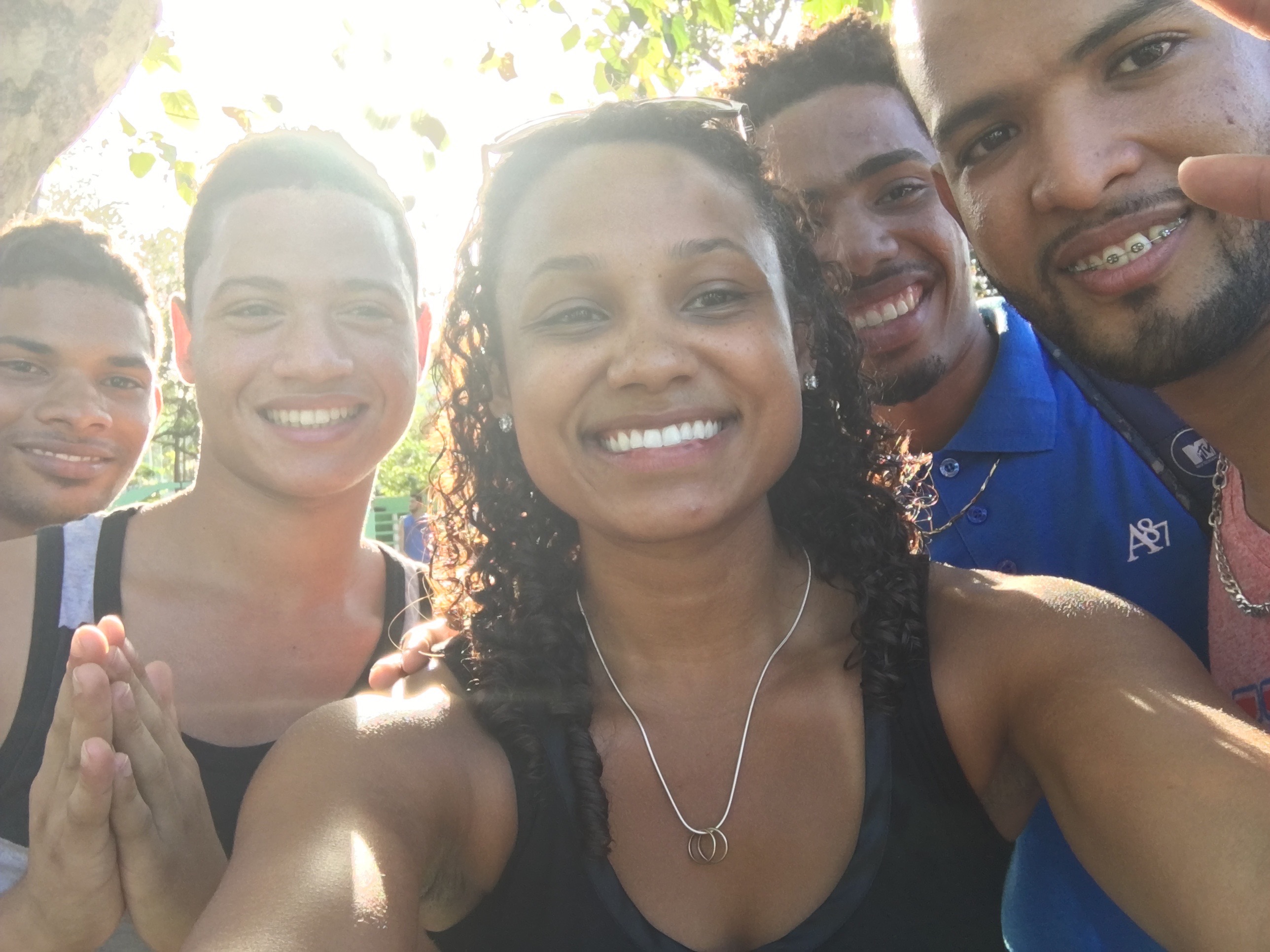
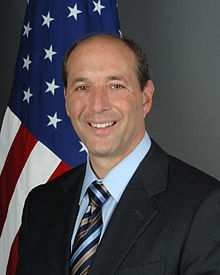
No Comments